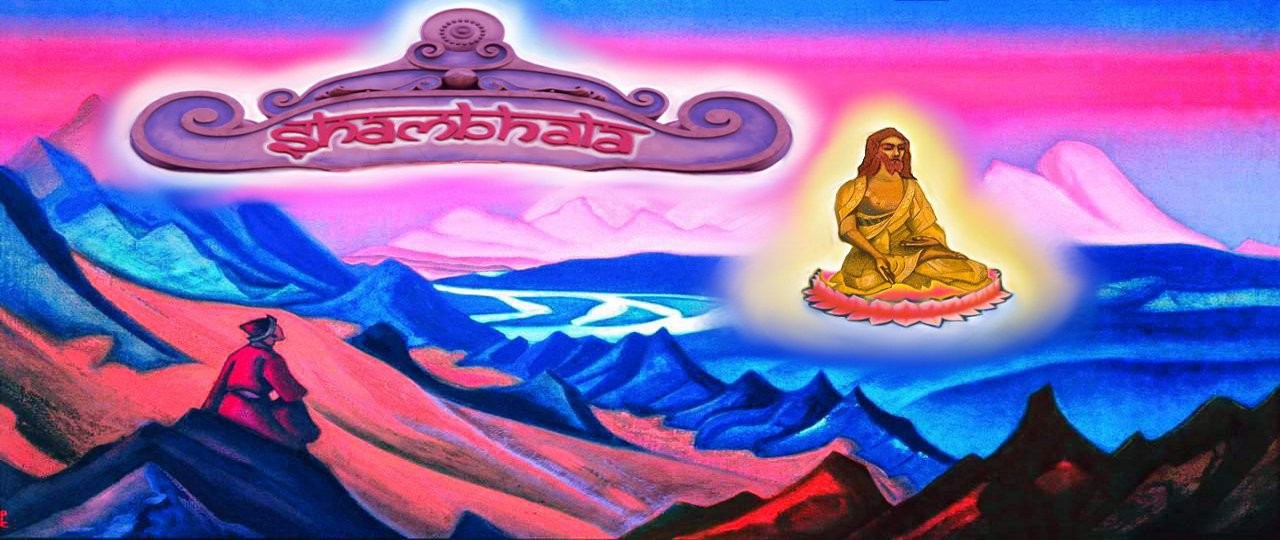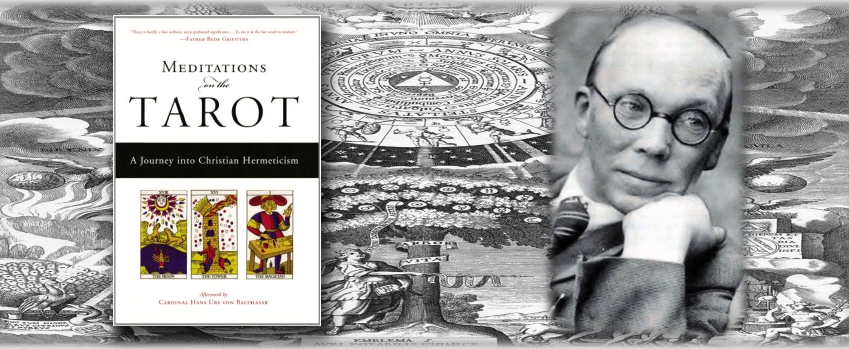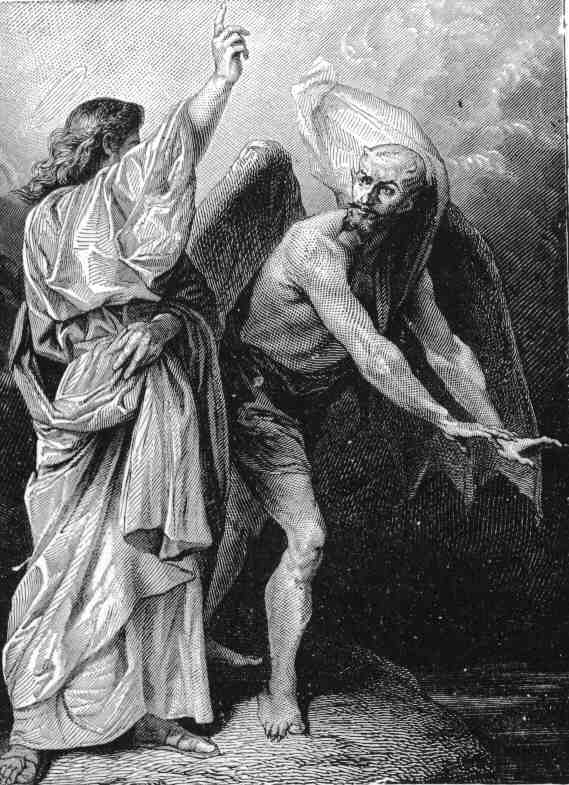The following article about controversial anthroposophist-turned-Catholic, Valentin Tomberg (1900-1973), is an excerpt from my recently published book, The Greater and Lesser Mysteries of Christianity: The Complementary Paths of Anthroposophy and Catholicism (2015). For more information, the book can be ordered from Amazon.com.
Meditations on the Tarot: A Journey into Shadowy Occult Deception
Even though, as an anthroposophist, Tomberg was rebuffed in his efforts to be recognized as the esoteric Christian successor to Rudolf Steiner, he still fervently held on to this vainglorious, egocentric delusion throughout his Catholic conversion. His unabashed praise of St. Ignatius and his Spiritual Exercises was a subtle contrivance needed to position himself (and the Hermetic “spiritual exercises” of his Tarot book) as the Christian successor to St. Ignatius (and thereby, to Rudolf Steiner). What Tomberg had failed to accomplish as an anthroposophist, he was certain he had accomplished as a Catholic esotericist (even “from beyond the grave”).
It’s perfectly obvious to any sincere esoteric Christian (without a hidden agenda) that Valentin Tomberg cannot hold a candle-flame to the sun-burst of supersensible knowledge issuing from Rosicrucian initiate and “master of wisdom,” Rudolf Steiner. Tomberg’s feeble attempt with Meditations on the Tarot is pathetically obvious.
To begin with, the meditative imagery that Tomberg chooses for his “spiritual exercises” are coloured woodcut designs from Jean Dodal’s early eighteenth-century version of the Tarot de Marseille, a deck of cards purportedly invented in the fifteenth century in northern Italy. So why does Tomberg refer to these images as “Hermetic”? According to some occult historians, tarot cards (particularly the major arcana) were originally derived from the ancient Egyptian “Book of Thoth,” and later introduced into Medieval Europe by migratory gypsies. As explained by occultist, Manley P. Hall (1901‒1990) in The Secret Teachings of All Ages (1928):
A curious legend relates that after the destruction of the Serapeum in Alexandria, the large body of attendant priests banded themselves together to preserve the secrets of the rites of Serapis. Their descendants (Gypsies) carrying with them the most precious of the volumes saved from the burning library―the Book of Enoch, or Thoth (the Tarot)―became wanderers upon the face of the earth, remaining a people apart with an ancient language and a birthright of magic and mystery.
Since the Egyptian god, Thoth, is also known as “Hermes” or “Hermes Trismegistus” (the “Thrice-great”), tarot cards are therefore considered by some occultists (such as Tomberg) to be “Hermetic.” However, even granting that tarot cards had an Egyptian origin, the images of the Tarot de Marseille are entirely Renaissance European: the clothing, the architecture, the furniture, the objects and the people―which include an emperor, an empress, a pope and a papess (female pope)―all did not exist during the ancient time of Hermes.
Even in such a “Europeanized” form, it’s still rather bizarre that Tomberg would choose meditative images loosely derived from pre-Christian Egypt to use as Catholic “spiritual exercises”! For all the areas of concern that have been previously identified with the Ignatian Spiritual Exercises (in Chapter sub-section 4.3), at least most of the meditative imagery was safely taken from the Gospels.
Besides, there already exists within the Catholic Church a safe and effective developmental path leading to union with Christ-Jesus, and that is the sevenfold path of Mystic-Christianity. This tried and true developmental system has been successfully practiced within the various monastic orders for centuries, and exclusively employs meditative scenes from the life of Christ-Jesus―not from ancient Egypt or Renaissance Europe.
Rather than meditating on “The Magician, The Hanged Man, The Devil, The Lovers, The Chariot, The Moon, The Wheel of Fortune” and fifteen other non-biblical images, Mystic-Christianity focuses on the Gospel of John and seven profound events in the life of Christ-Jesus:
- the washing of the feet
- the scourging
- the crowning with thorns
- the crucifixion
- the mystic death
- the burial and resurrection
- the ascension
Why anyone―especially devout Catholics―would think that meditating on the images of the tarot is a superior method of Christian development, instead of that used in Mystic-Christianity, is certainly difficult to comprehend.
And what exactly is the goal, the end result of the Tombergian tarot meditations? It certainly can’t be mystical union with Christ-Jesus. If becoming Christ-like requires that the disciple follow in the footsteps of the Master, it’s not likely that our Saviour would be leading us through the labyrinthine symbolic imagery of a pseudo-Egyptian deck of cards so that we can finally reach him.
Therefore, one does not need to read very much of Tomberg’s Meditations on the Tarot to conclude that the entire enterprise is a blind occult alleyway leading to spiritual darkness, rather than to the true light of Christ.
Even aside from the shadowy occultism and the unsavory appeal to magic contained in the Meditations on the Tarot, it’s also astonishing how unabashedly arrogant and openly heretical Tomberg appears with certain of his written pronouncements. Once again on page 4, Tomberg wrote:
The seven sacraments of the Church are the prismatic colours of the white light of one sole Mystery or Sacrament, known as the Second Birth, which the Master pointed out to Nicodemus in the nocturnal initiation conversation which He had with him. It is this which Christian Hermeticism understands by the Great Initiation.
For over two thousand years the Catholic Church has celebrated seven sacraments that are unquestioningly held to have been established by Christ-Jesus himself, and lovingly entrusted to his body the Church: (1) baptism, (2) confirmation, (3) Holy Communion (Eucharist), (4) holy matrimony (marriage), (5) holy orders, (6) penance (reconciliation), and (7) anointing of the sick. Tomberg here astoundingly claimed to have discovered an eighth, overarching sacrament―the sacrament of sacraments―which he termed the “sacrament of the second birth,” which he also called the “Great Initiation”!
Other pronouncements that Tomberg made in Meditations on the Tarot, which attempt to combine his brand of tarot-occultism with Catholicism, are just plain silly. For example, commenting on “The Pope” meditation (or “Letter”) on page 119, Tomberg wrote:
The post of Pope or the Holy See is a formula of divine magic―just as the post of Emperor is―in the history of humanity. It is what is meant by the esoteric term Petrus (Peter) … Petrus is the term in the Old and in the New Testament designating the divine, immovable ordinance or formula of divine magic.
I’m sure the present pope, Francis I, would be shocked and amused to learn that Tomberg and his present-day Catholic supporters regard him as the “grand magician” of the “Church of divine magic.”



